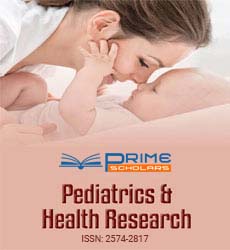Perspective - (2022) Volume 7, Issue 4
Randomized Controlled Trials (RCTs) in Child Psychology
Grabowski Dan*
Department of Pediatric Psychology, University of Freiburg, Germany
*Correspondence:
Grabowski Dan, Department of Pediatric Psychology, University of Freiburg,
Germany,
Email:
Received: 28-Jun-2022, Manuscript No. IPPHR-22-14202;
Editor assigned: 30-Jun-2022, Pre QC No. IPPHR-22-14202 (PQ);
Reviewed: 14-Jul-2022, QC No. IPPHR-22-14202;
Revised: 19-Jul-2022, Manuscript No. IPPHR-22-14202 (R);
Published:
26-Jul-2022, DOI: 10.36648/2574-2817.7.4.42
Introduction
Based on positive emotions and health theories and models,
we hypothesize that positive emotions may improve asthma
outcomes through mediators such as health behaviors and
health-related physiology. Additionally, enhancing positive
emotions during times of stress may be particularly relevant to
reducing asthma symptoms. In this commentary, we address
hypothetical mechanisms behind such associations, based on
a theoretical framework of positive emotions. In addition, we
summarize the methodologically rigorous work of positive
emotion interventions in other clinical settings to suggest that
positive emotions may be a useful tool in the management of
childhood asthma. COVID-19 has brought many challenges to
mental health service delivery. In his first month of the pandemic,
a Paediatric Consultant Liaison (CL) psychologist reported
a significant change in service delivery methodology.
Description
To better understand how these changes and other emerging
trends continue, a follow-up study explored her change and
challenges 6 months after the pandemic. Anonymous questionnaires
assessed issues related to pediatric CL psychology,
including practice change, perception of change, and institutional
support. The questionnaire was sent to the lists advocacy
group of the APA Society of Pediatric Society. Thirty responses
were analysed. Quantitative results demonstrated
participants’ belief that telemedicine was as effective as faceto-
face services for outpatient psychological care, but less effective
for inpatient care. Participants reported perceptions of
how the facility supports safety, psychology student safety and
educational goals, and patient care. Qualitative results indicated
that most psychologists experienced changes related to
their dynamics with the medical team. This includes changes in
team efficiency, workload, migration, and team collaboration.
There is evidence of increased utilization of pediatric psychological services after being integrated into the city’s pediatric
gastrointestinal clinic. However, research within rural health
systems is lacking. Use of pediatric psychology services was
assessed through a retrospective analysis of electronic health
record data, and referrals were made 6 months before and after
pediatric psychology was integrated into a pediatric gastroenterology
outpatient clinic in a rural setting. After consolidation,
we observed a significant increase in the number of child
psychology referrals and the number of first visits billed, and a
significant decrease in observed hours. He found that patients
with statutory health insurance were 3.1 times more likely to
be charged an initial fee than those without statutory health
insurance. Current findings support the integration of pediatric
psychology into rural pediatric gastroenterology outpatient
clinics to increase utilization and ensure that traditionally underserved
families benefit from these services. I support making
it possible.
Conclusion
Although the taxonomy divides anxiety symptoms into several
diagnoses, patients usually present multiple diagnoses. This is
especially difficult for young people, where mixed presentations
are especially common. Anxiety comorbidities may reflect
multivariate cross-domain interactions that are not highlighted
in current taxonomies. We use a network analysis approach to
model these interactions by characterizing childhood anxiety
as distinct and interconnected symptom domains. Quantifying
this network structure informs beliefs about childhood anxiety
that shape clinical practice and research.
Acknowledgement
None.
Conflict of Interest
The authors declare that they have no conflict of interest.
Citation: Dan G (2022) Randomized Controlled Trials (RCTs) in Child Psychology. Pediatr Heal Res. 7:42.
Copyright: © 2022 Dan G (2022) Randomized Controlled Trials (RCTs) in Child Psychology. Pediatr Heal Res. 7:42.
